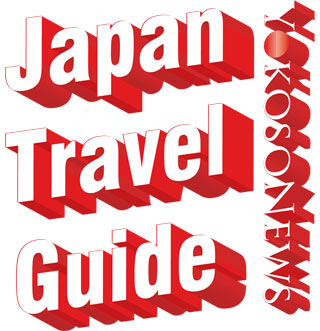Smart Traveling Japan - SUICA and ICOCA
MUST-HAVE SMART FARE CARDS IF YOU PLAN TO TRAVEL JAPAN BESIDES JR PASS

The fare system of Japanese trains are very complicated, especially in the metropolitan areas, such as Tokyo and Osaka. It's a headache to look for the routes and calculate the fares. (Even I get confused!)
Therefore, JR East introduced the smart card called "SUICA". This is pre-paid electronic money system that stores the money value into the card. When going though the ticketing gates at a station, the fare is deducted automatically, and you don't have to worry about calculating the fare and saving time to buy the ticket each time you ride a train.
Travelers in Tokyo and Osaka may want to consider using SUICA and/or ICOCA
Although it sounds very convenient, yet, the smart card system in Japan is very complicated. I could probably talk hours to cover everything.
But let's short-cut to the bottom line...
As a traveler, if you ever plan to stay in Tokyo or Osaka area, we recommend to purchase SUICA (Tokyo area) and/or ICOCA (Osaka area) unless you have JR Pass.
(Although you have JR pass, you may want to buy one if you ever plan to use subway systems or non-JR trains).

Example of smart cards in Japan - SUICA, PASMO and TOICA.
SUICA for Tokyo (and other JR metropolitan areas)
SUICA was introduced in 2001, and have issued over 30 million cards. SUICA stands for "Super Urban Intelligent CArd". It also sounds like watermelon in Japanese, "Suika" and smoothness in Japanese, "Sui-sui".

You could purchase a SUICA card at any automated vending machines in the JR East stations in Tokyo area. We recommend to buy it immediately at Narita Airport when landing Japan when you ever plan to use it.
JR East sells a SUICA card for 2,000 yen. 500 yen goes to deposit. You could get 500 yen back when returning it to the station. The rest of 1,500 yen can be used as the train fare or e-money to purchase anything where you see SUICA signs.
The use of SUICA (and other smart cards) is very simple. When approaching the ticketing gate before getting into the train, you tap the card onto the SUICA antenna on the gate. You hear the beep sound, and the screen tells you the remaining value of your card.

How to use smart card by Einokapihateinend from Wikipedia
The SUICA reader can read any card within 10cm radius. So, you don't even have to pull the card out from your wallet.
After your ride, you tap your SUICA card at the ticketing gate when exiting. The money will be deducted from your card.
If you run out of money, you go back to the vending machines, insert a SUICA card, and add money.
In addition to the train fare, you can use the SUICA at many drink vending machines, convenience stores and some electronic stores in Tokyo area. (where SUICA signs are displauyed).
Japanese people are reluctant to use credit cards. They rather use pre-paid card so that they don't over-spend.
Once you finished using SUICA, you go back to the station and return your card. You get 500 yen deposit back. They'll take 210 yen as "refund" fee, and get the remaining value back (If the remaining value is less than 210 yen, you won't get the credit back. But you still get 500 yen deposit back no matter what.)
Also if you don't use it for 10 years, you will lose the remaining value and deposit. Make sure to come back to Japan within 10 years if you want to keep it.
When to choose PASMO over SUICA?
In Tokyo area, there is one more smart card called PASMO. PASMO is 100% compatible to SUICA. So SUICA can be used at any PASMO service area.
But SUICA cards are compatible to other JR smart cards system such as KITACA, TOICA, ICOCA, SUGOCA and etc. SUICA is the most popular and compatible smart card system in Japan.
PASMO has better auto-charge system. If you have supported credit card, you could auto-charge the money value. SUICA supports a fewer credit cards than PASMO.
There is other advantages to use PASMO over SUICA. But those are for the residents. So YokosoNews just recommend SUICA over PASMO for travelers.

Pasmo card
ICOCA Card for Osaka Area
In Osaka area, we recommend to buy ICOCA card, which is issued by JR West.
If you are planning to use a lot of non-JR trains in Osaka area, such as Subways, Kintetsu, Hankyu, Hanshin, Nankai, and Kobe City and etc..., ICOCA let you ride these lines whereas SUICA would not.

Search "SUICA" or "ICOCA" in Wikipedia for more detail usage.
Happy traveling!
Give us a comment about these smart cards system. YokosoNews is planning to do a complete guide for these smart cards for the people living in Japan.
Photo gallery of other smart cards
Katz spend time to travel and obtain these cards... so let me show you some of my collections.
TOICA, the smart card issued by JR Central. It's mailny used in Nagoya area. It has certain compatibility with SUICA, and ICOCA.

Then, here are KITACA and SAPICA from Hokkaido. KITACA is issued by JR Hokkaido. And SAPICA is issued by Sapporo City Tranportation Bureau. (Thanks to Yuka for sending me these photos!)


The following is not issued by transportation companies but issued by AEON group. It's WAON card (Mine is attached to Japan Airline Milege club). You cannot use this card to ride a train, but to buy some groceries or clothes at AEON group stores.
Last July, I converted 20,000 miles of Japan Airline's milage to 20,000 yen value and went shopping :)

And the following is TAP, the smart card issued by METRO and surrounding systems in Los Angeles.
Many of Japanese smar cards use SONY's FeliCa system. But it seems that TAP is not using FeliCA.
